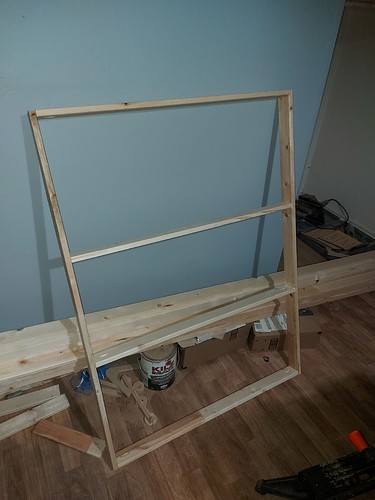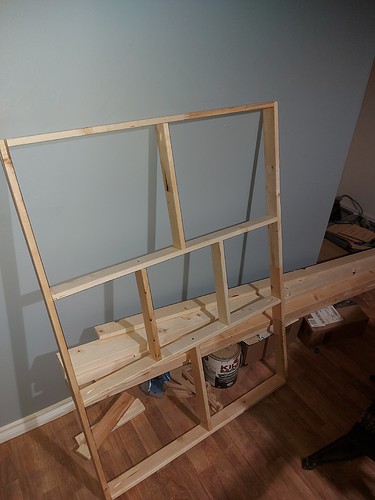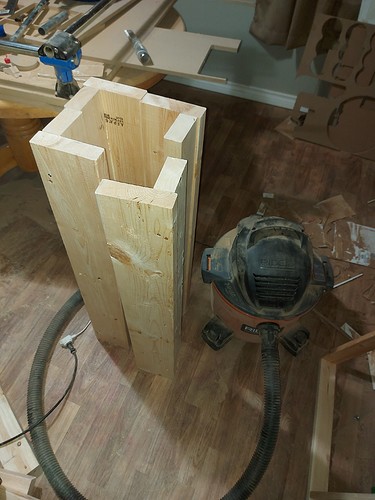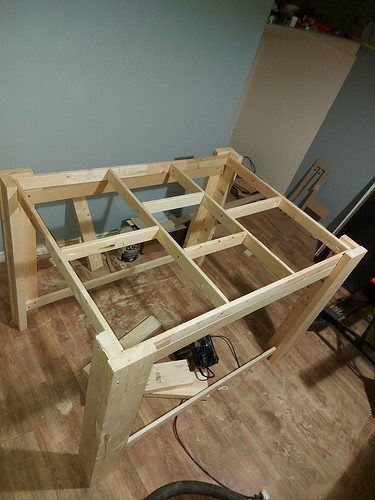So Jeff’s table build got me thinking, and it’s about time I did something with my MPCNC.
As it stands, I built it for a 25" by 37" working area, and it’s all sitting on a 3/4" slab of MDF, about 40" by 49" which is just sitting on top of an old kitchen table. While this works, it’s not the best arrangement, and I’ve been meaning to get to building a better table for it. This suffers from my classic syndrome of “It works, don’t **** with it.” I’ve lost count of the number of projects that got a temporary “Proof of concept” build that turned out to be a permanent build because it worked well enough, even if it could/should have been nicer.
Actually, a couple of projects that were done years ago that are getting a second look now that I have the CNC, but I also need a good flat assembly table, and right now the CNC isn’t it.
I’m faced with a couple options.
-
Get off my duff and build the torsion box for the Primo. I have a sheet exactly the same size as the 3/4" base already cut, it just needs stringers and some glue, then legs. (I was thinking of using 2X4 and 2X6 corners, maybe height adjusters for levelling, or just make a wedge for one corner to prevent twisting forces on the box.
-
Build a smaller torsion box for the Primo, reducing the work area down to about 18" square, and get off my duff and get started on a LowRider2. I have some materials earmarked for a LR2 already, including some 3" square steel tube, which I intended to weld for a table base, then I could just bolt a spoilboard down to it. (The steel frame would also force me to dig out my MIG welder and get that set up, lol.)
Of the 2 options, even though I do plan on building the LR2, I probably really should build the torsion box for the Primo regardless. The kitchen table WORKS, but it’s a bit low, and isn’t as flat as it really should be. (My plan for stuff that needs accurate Z depth – like my Zen table bottom layer – has been to surface foam to the required size which makes quite the mess.) I guess I’m trying to convince myself to just build the box. I can use it as an assembly table when I resize the Primo. (More arguments to convince myself.)
I am thinking of making the “cells” for my torsion box about 10" by 12", so a grid 4 by 4. It would be nice if it wasn’t too heavy, but it’s going to be MDF, so it’s not going to be lightweight. Some mass will help keep it stable too, so that’s not really a terrible thing.
Eventually, it needs to be possible to take it out of the room.I suppose I could leave the legs so they can be unscrewed, but maybe making a structure so that the torsion box sits on an under frame would be a good idea. That’s kind of the plan anyway, to have under table storage, and borrowing liberally from @jeffeb3 a slot for the shop vac seems to be in order so that I stop stubbing my toes on it walking around at night.
 Hope that helps.
Hope that helps.


